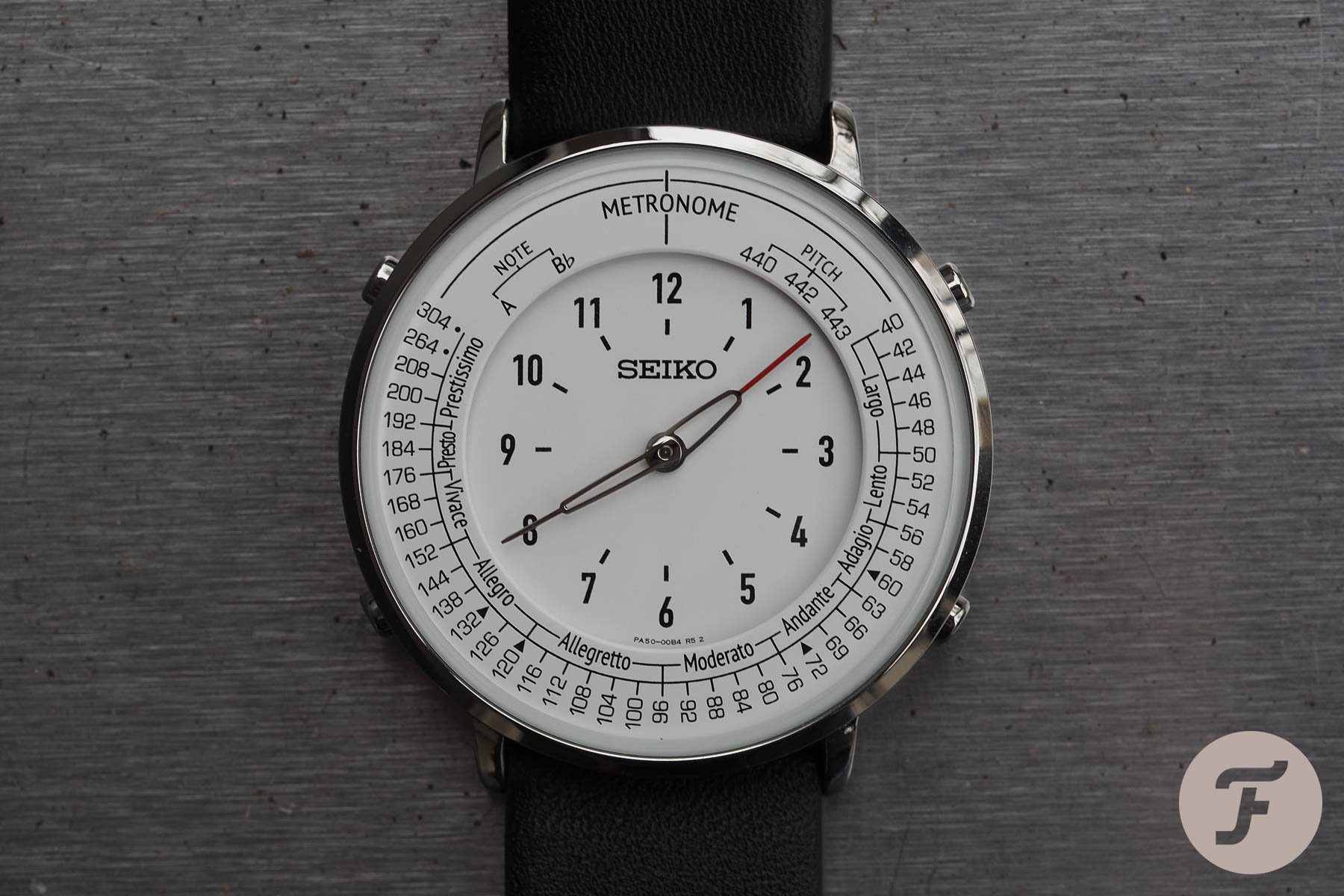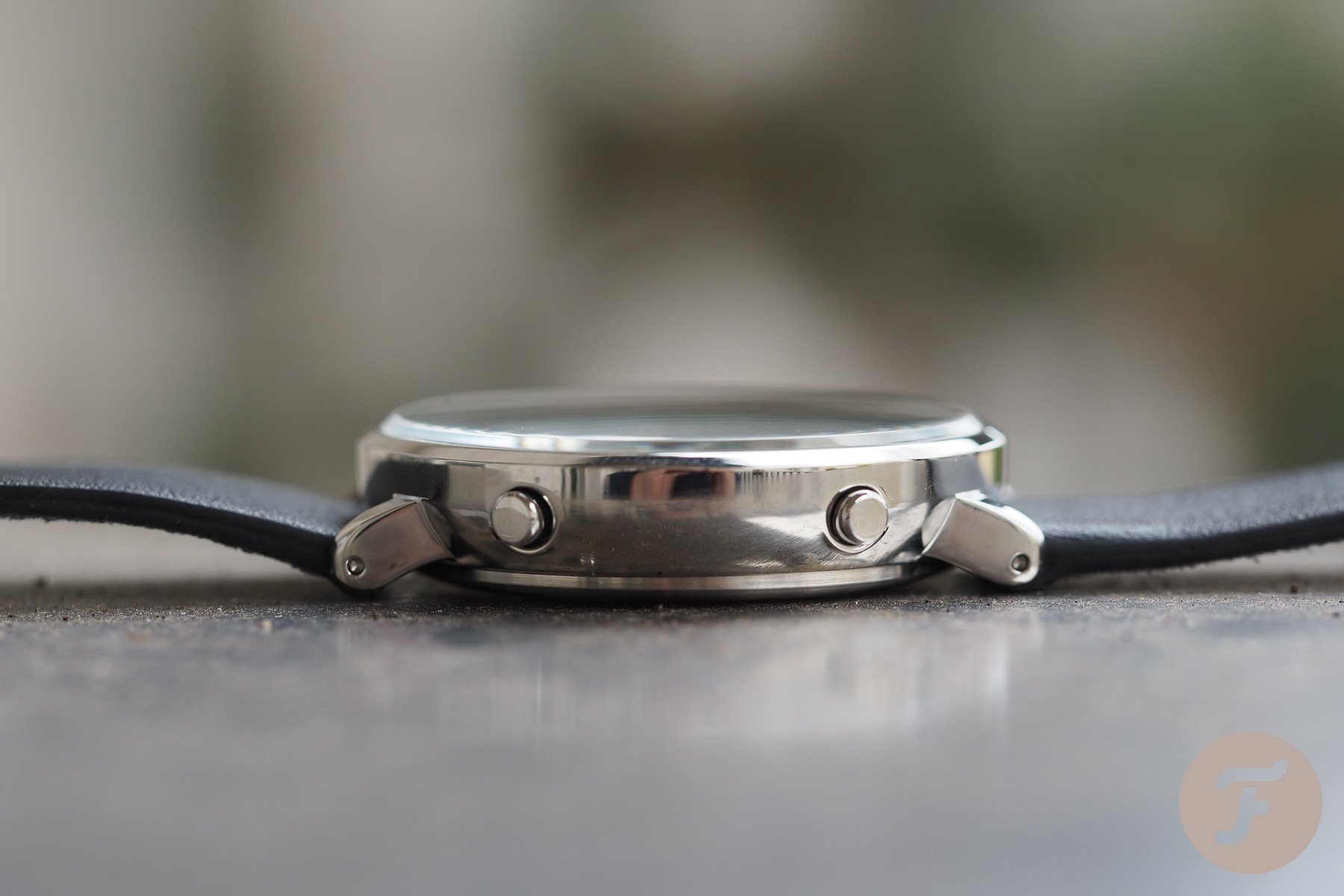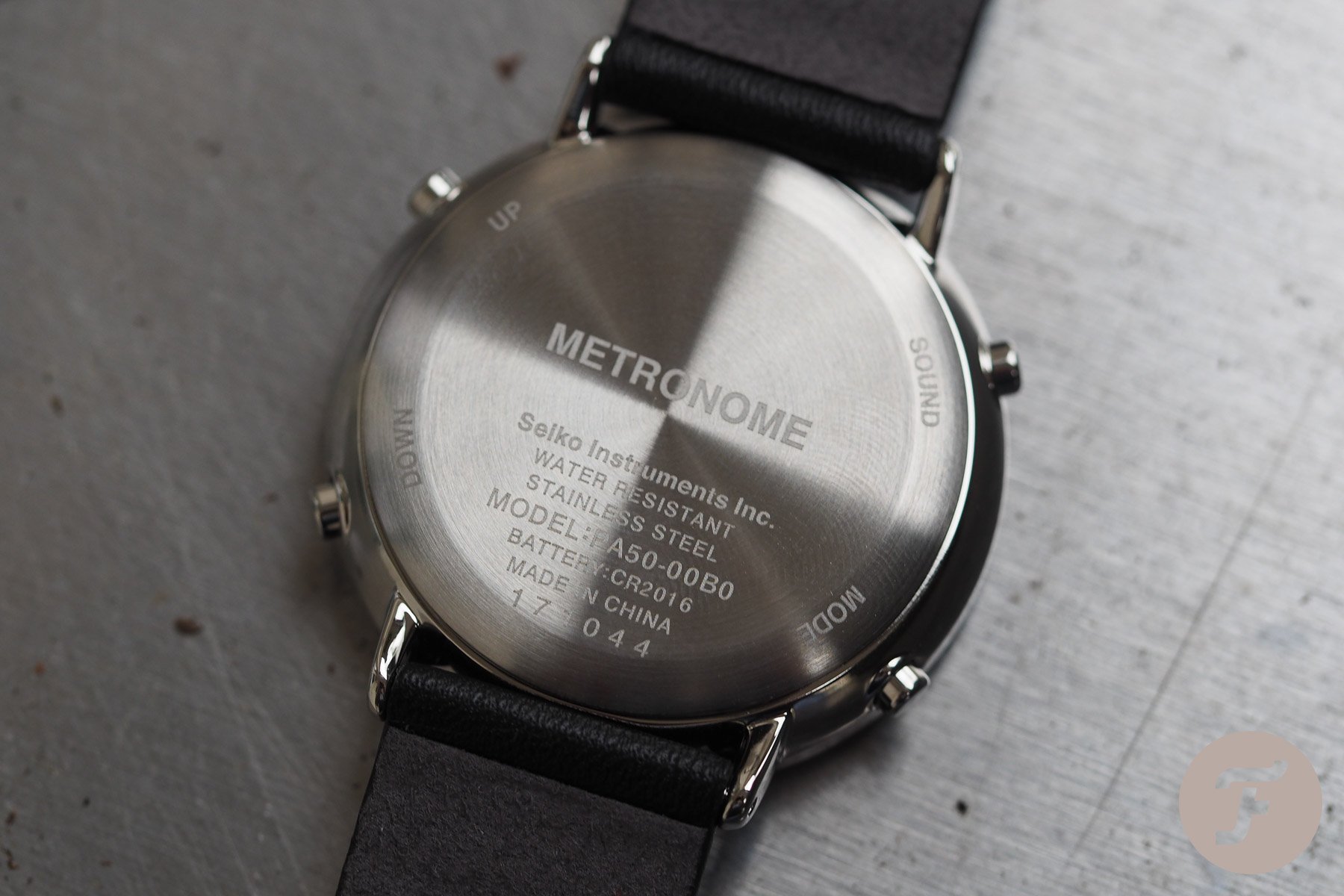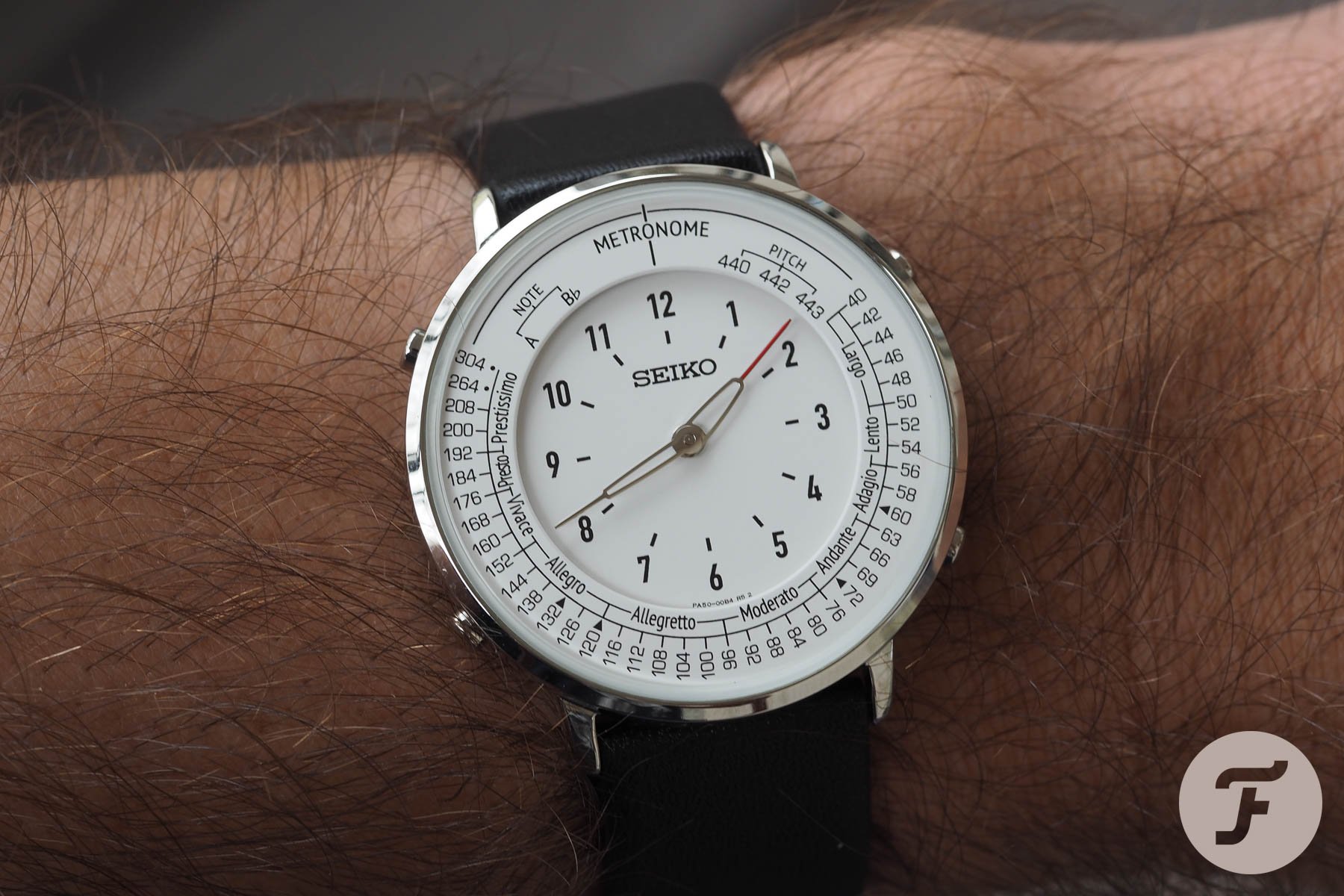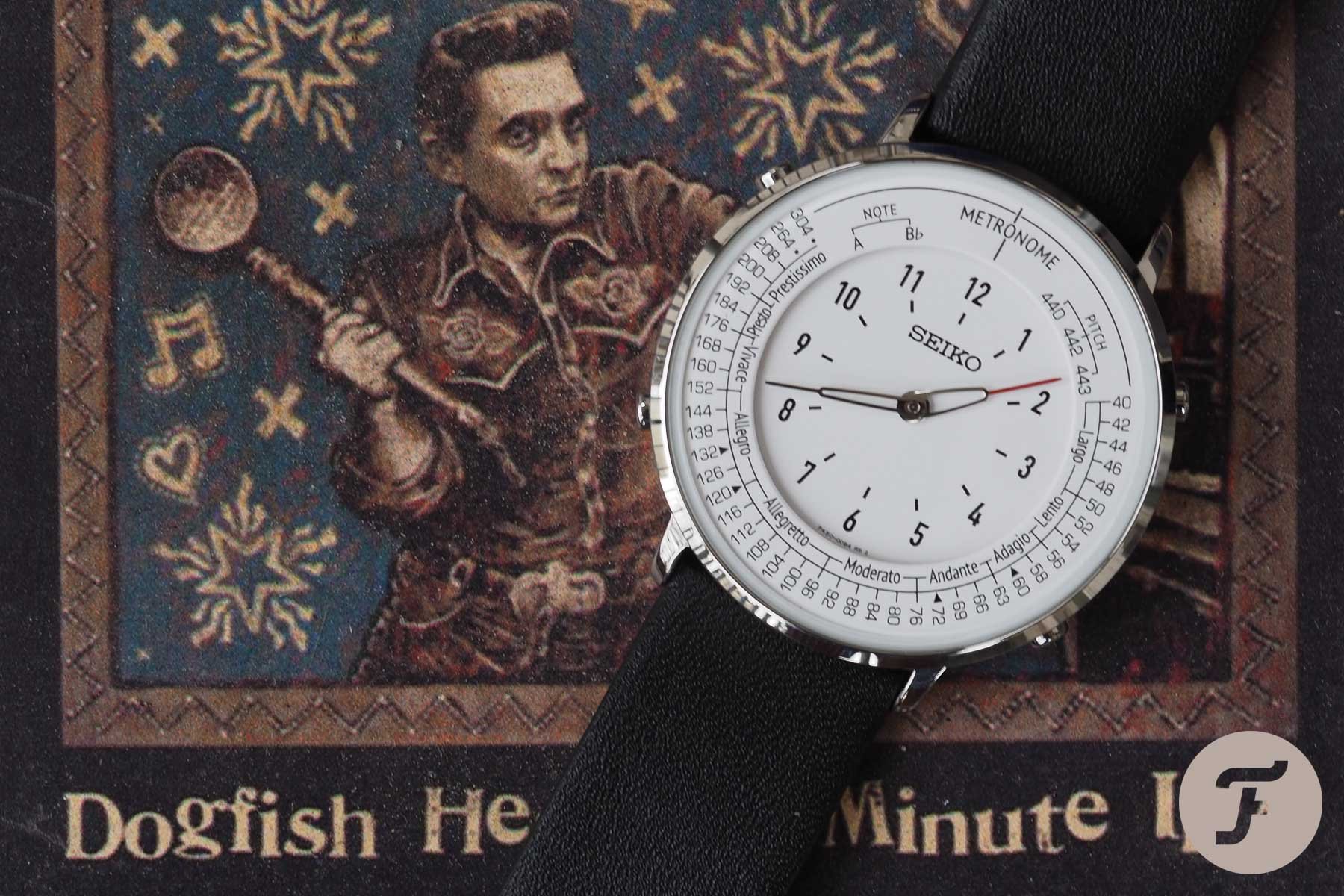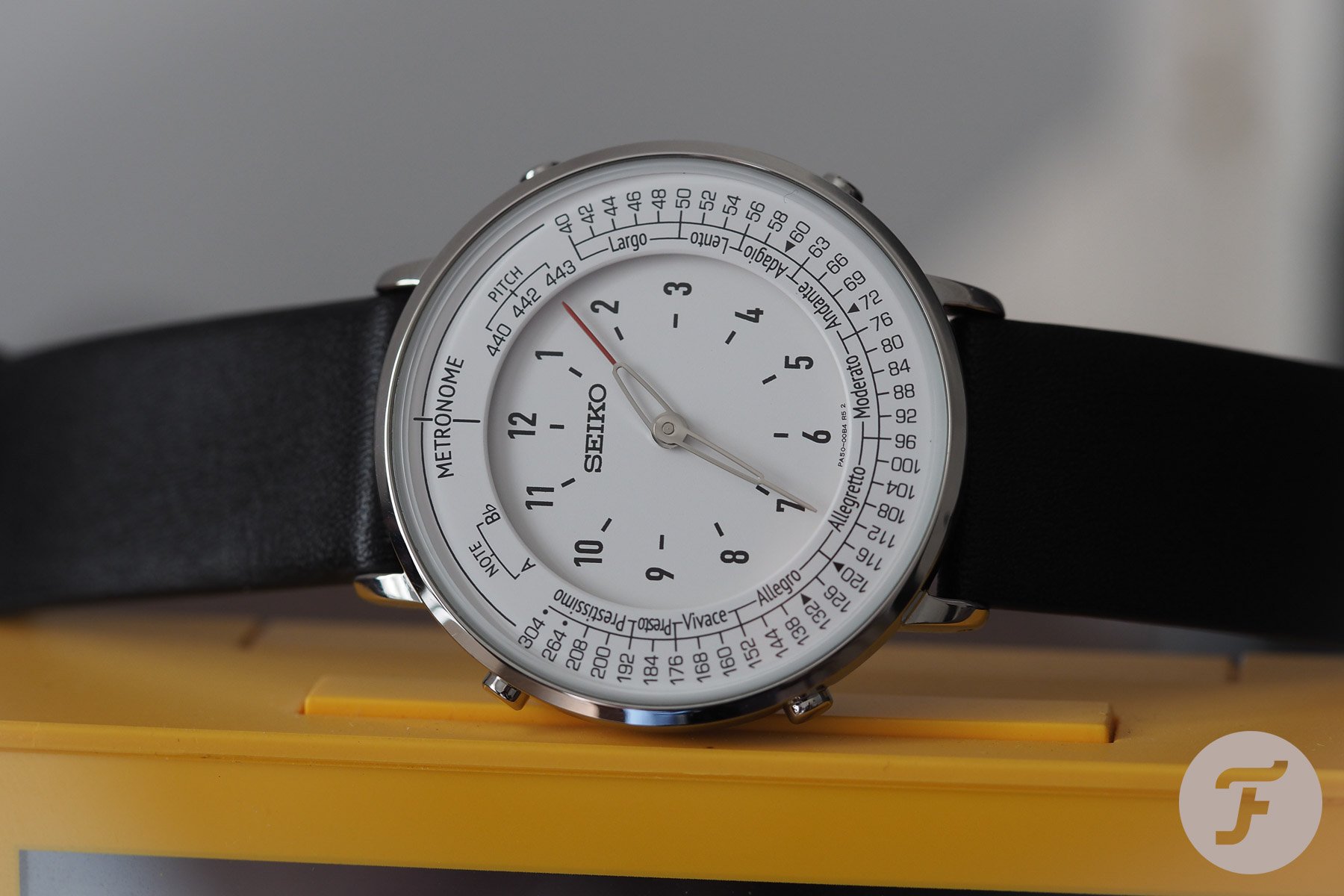The Seiko Metronome Watch Is Seriously Cool Forbidden Fruit
These days, it’s rare that a new Seiko escapes notice. The brand is seriously popular now, and the watches are more globally available than ever. Every so often, though, a new piece arrives and can’t be purchased everywhere. The Seiko Metronome is that watch. As you’ll see, though, the brand name isn’t exactly what it seems.
I have a confession to make. It has been a long time since I purchased a new Seiko. There’s nothing wrong with the brand’s watches, yet I have found myself a bit overwhelmed by the sheer number of releases over the past couple of years. Plus — and this likely draws more upon my overall interests — I’ve been buying more vintage. Still, my interest was piqued when I saw the new Seiko Metronome pop up on my Instagram feed and my buddy Eric in Japan was kind enough to purchase one for me.
Now, let’s mention why the Seiko Metronome isn’t really a Seiko in the way that you imagine. This watch is made by Seiko Instruments, and that’s an entirely different division under the parent company. Seiko Instruments makes printers, machine tools, ball bearings, electric components, and, yes, metronomes. Today’s focus just happens to be a wristwatch, but the company is more well-known for making handheld or countertop versions.
The Seiko Metronome is for musicians…which I am not
Do I play music? I absolutely do not! Aside from a five-year period where I toiled away on the trumpet and a one-semester dalliance with the guitar (hey, I needed one last credit to graduate) in university, playing music really isn’t my jam. So, why on earth did I buy the Seiko Metronome? Well, just look at it and the answer is clear. In my eyes, this is one of the most eye-catching Seiko watches to hit the market of late.
There are a bewildering number of choices within the Seiko Metronome collection which includes a number of case finishes and dial colors. I chose what seems to be the most popular reference, SMW006A, because I found that it truly highlighted all the wonderful dial details. Plus, it looks quite “Bauhaus”, doesn’t it?
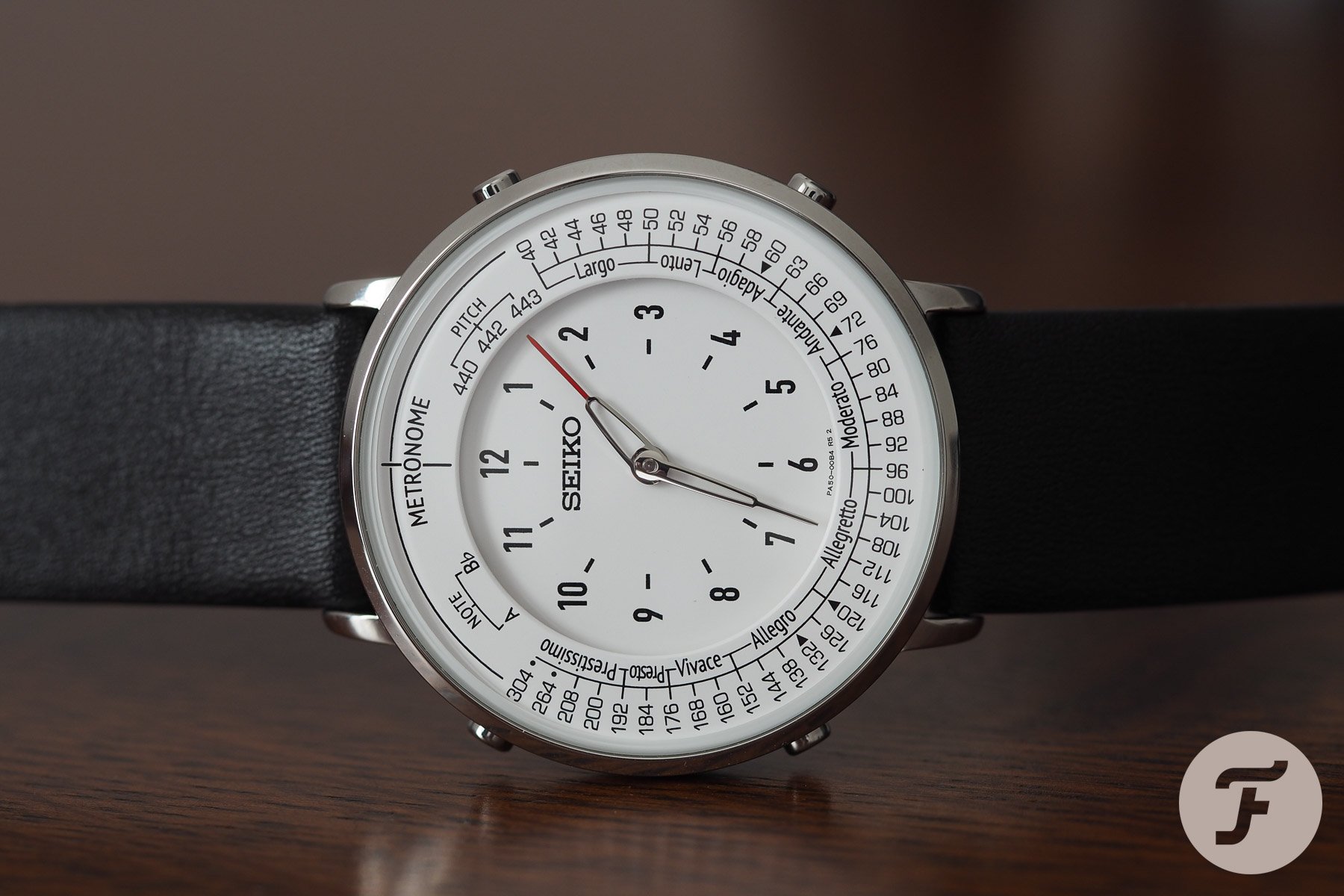
Bauhaus at a distance
Yes, from a distance, the Seiko Metronome could play the more melodic counterpart to something like the Junghans Max Bill. The comparisons end there, though, because, upon closer inspection, there’s an awful lot happening on this dial. Essentially, the center is countersunk, and this portion takes care of timekeeping duties. There are no running seconds on this watch for the sole reason that the hands double as the swinging metronome balances.
The rehaut is where things truly get funky on the Seiko Metronome. To the left of 12 o’clock, there’s an option of either or A or B flat. Within either of those notes, three different pitches can be chosen that are shown to the right of 12 o’clock. The remainder of the rehaut relates to timing, and I believe there are 42 different cadences.
A user interface that makes me feel like a maestro
I’ve mentioned that I’m a complete nitwit when it comes to working multi-function quartz watches, but the Seiko Metronome is actually a breeze to operate. The lower-left pusher is the mode button and simply needs to be depressed to switch modes. The first push takes both hands to 12 o’clock, and then they begin to dance back and forth in the metronome function. With this on, the upper-left pusher can be used to turn on the classic “ticking” sound that one hears during music practice or a psychologist session. Using the right pushers “up” and “down” increases or decreases the speed. It’s easy to use and actually fun.
The third mode turns on the pitch function. Here, the right pushers can be used to scroll through the six different tones. The watch, by the way, is loud but alarmingly so. Finally, a third press returns the hands back to timekeeping mode. Of course, the watch is keeping time in the background while the other functions are used.
Some specifications
The Seiko Metronome uses a stainless steel case and snap case back. The manual tells us that the watch is rated for contact with water in everyday life. So, in other words, a light drizzle or a run-in with overzealous hand-washing should be fine. The watch is topped off with a mineral crystal and comes on an admittedly cheesy 18mm black leather strap with unsigned pin buckle. As far as size, the brand markets this watch as unisex, and the sizing makes that believable. A diameter of 36.5mm, a lug-to-lug of 39.6mm, and a thickness of 10mm make it highly wearable, regardless of wrist size. As far as the battery, the watch uses a large CR2016 (easy to find for about 50 cents), which should last about two years.
Some thoughts — good and bad
I nerd out about watches like the Seiko Metronome because they’re so purpose-built. It’s a highly specific watch for a relatively small subsection of our population as well. How on earth did Seiko Instruments convince the top brass (good one, eh?) to invest in such a niche application when I’m sure there are cheap and effective phone apps that serve the purpose? Who knows, but that spirit is the main reason that I had to have it.
Of course, all is not perfect with the Seiko Metronome. The detail that jumps off the page is that it’s awful for reading the time! Seiko chose skeletonized hands that are beautifully designed in concept, but the two look identical with my crummy eyes. The minute’s hand has a slightly longer “hollow” area, and the hour hand has a red tip that is nearly impossible to discern. The main problem is that both hand tips extend to the edge of the “lip,” and that confuses the brain when trying to read the time. Of course, it works perfectly for the metronome, but even musicians will use that sporadically versus clock mode. Is it a complete disaster? Not really because the watch is so endearing, but it is kind of humorous to think about in light of all the other detail work.
The other annoyance — availability
A nice aspect of the Seiko Metronome is that it’s a non-limited edition in any form. The downside is that it seems to be specifically for the Japanese market. In that market, the watch is truly affordable at somewhere around ¥20,000 (currently around €138). On eBay or through various other sites in the rest of the world, the price jump to around €300. That’s still not awful, but it goes from being a relatively inexpensive novelty to competition with a more practical daily Seiko.
Final salvo
The Seiko Metronome is a truly fun piece that won’t break the bank. Plus, I’d suspect that many of our readers actually do play some sort of music, and this watch just might be — ahem — music to their ears. As I mentioned, it doesn’t come from the Seiko that most of us know, but I’m thankful that the company as a whole is still producing watches with odd use-cases. Do any of our readers own one of these pieces? If so, we’d love to hear if you’ve actually used it for its intended purpose.

